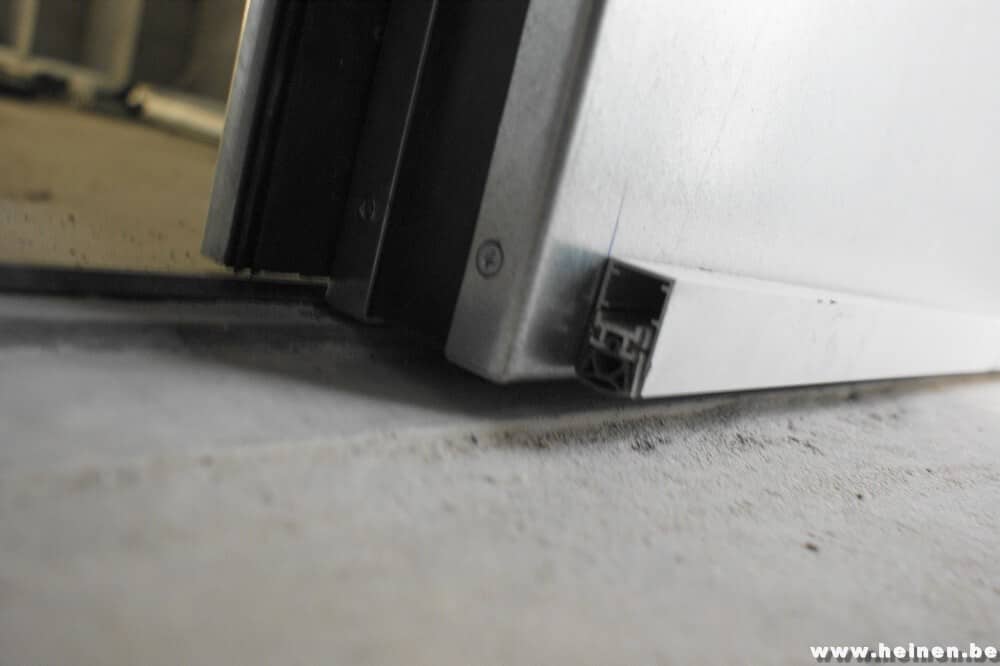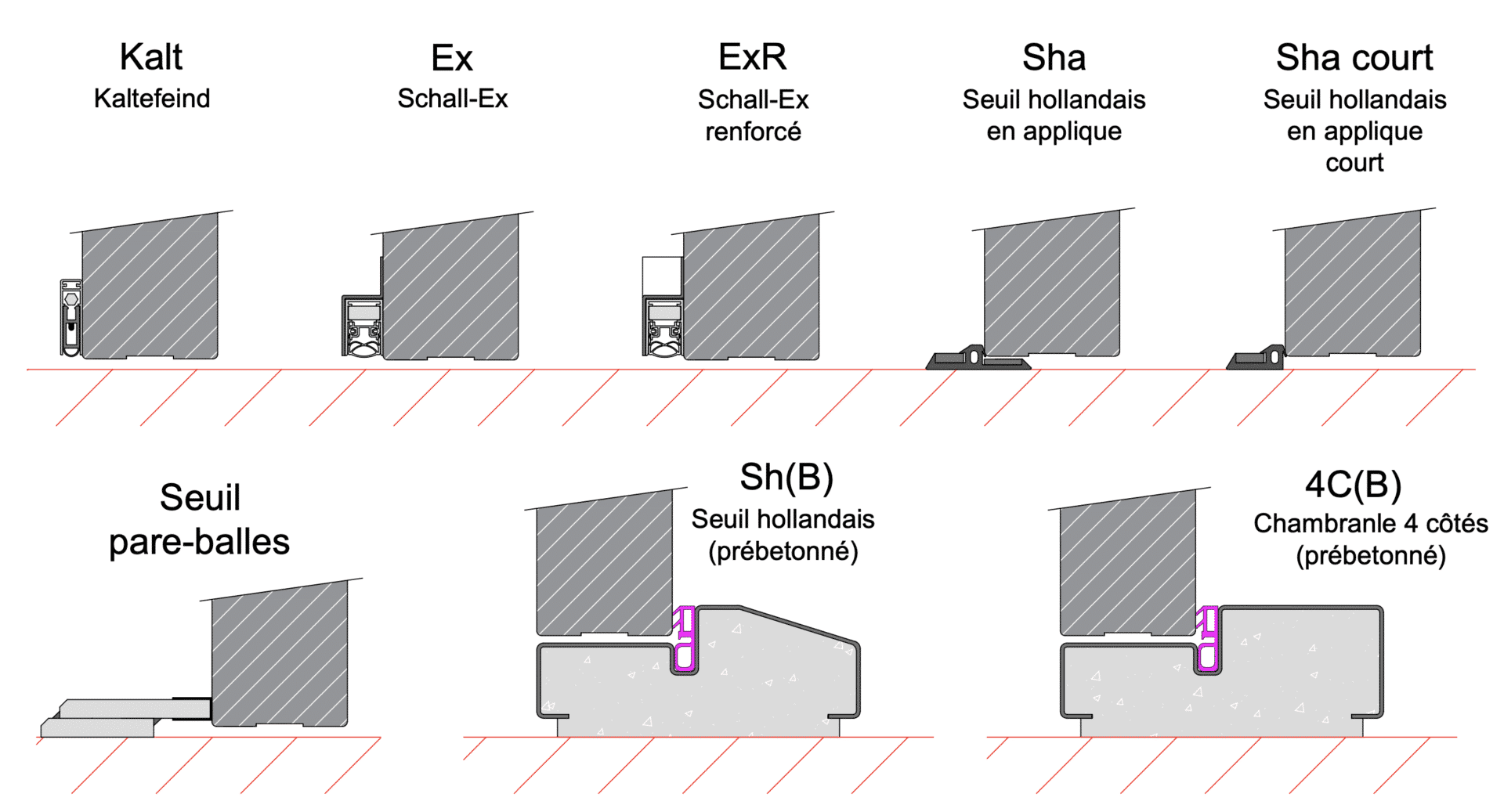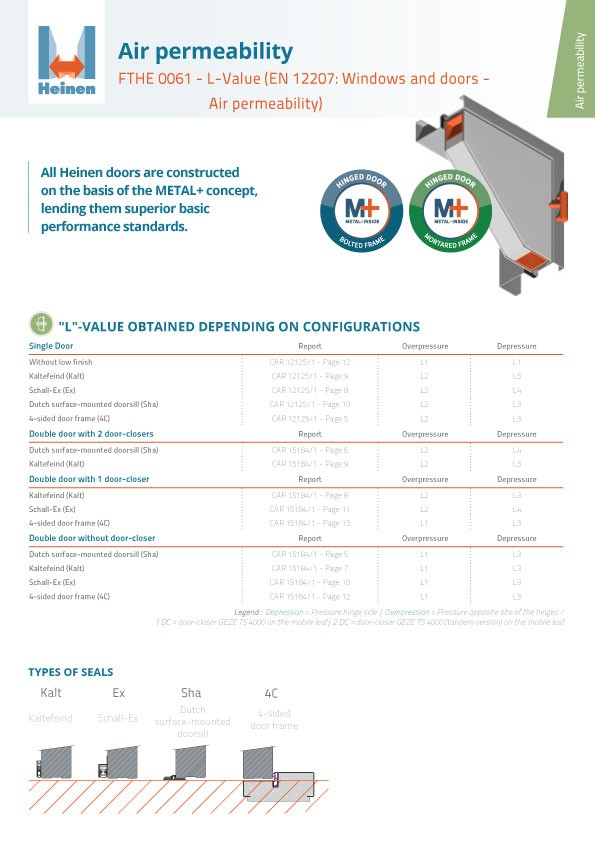Airtightness
EN1026 – EN 12207
Minimum L2
Air tightness is a performance feature that guarantees a low leakage rate between two zones subject to different pressures and separated by a door.
This performance feature is often associated with water tightness and wind resistance. Indeed, these are commonly known collectively as AWW performance features (air-water-wind).

Where can air-tight doors be used?
The permeability test may seek to ensure that the building presents a good level of air tightness in order to improve its energy performance (for instance, combined with thermal insulation).
This performance feature can also prove useful in the nuclear or chemicals sector, etc. Certain zones have to be placed under excess pressure to prevent the transfer of dust or particles in neighbouring zones. It is essential to master the leak flow rate from the room and especially the doors and windows for the dimensioning of the HVAC machines.

European standards
EN 1026 & EN 12207
Tests and certification in laboratory
Tests carried out on single and double doors at the CSTC (Technical and Scientific Construction Centre), an accredited laboratory, in accordance with current European standards:
EN 12207: Windows and doors – Airtightness – Classification
EN 1026: Windows and doors – Airtightness – Test method
The standards provide for 4 classes (L1, L2, L3, L4), ranked in order of air tightness, based on:
- either the length of the seals (m³/h.m)
- or the total surface area (m³/h.m²)
Class L4 therefore achieves the best air tightness (3 m³/h.m² at 100 Pa).
Accessories used at the bottom of the door
- No low finish
- Kältefeind sealing system
- Schall-Ex sealing system
- Ultra-thin doorsill
- Four sides of door frame

Standards table
| European standards | EN 12207 EN 1026 |
|---|---|
| Symbols | L |
| Resistance class | L1 L2 L3 L4 |
Heinen |
Pressure on hinge side: up to L4 Pressure on non-hinge side: up to L2 |
Heinen adapts its products to your needs
Air permeability is just one of the many features of Heinen doors. Discover all the other exceptional characteristics that ensure security, comfort, and reliability for your projects!

